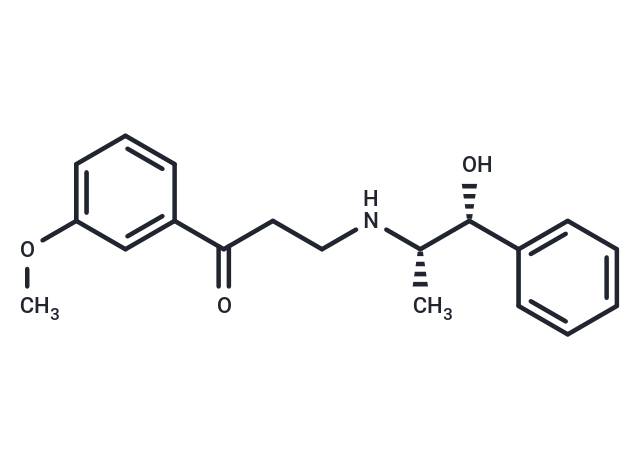Shopping Cart
- Remove All
 Your shopping cart is currently empty
Your shopping cart is currently empty

Oxyfedrine is an orally active β-adrenoreceptor agonist. Oxyfedrine is a vasodilator that reduces coronary vessels tonicity that can be used in cardiovascular disease research[1] [2].

| Pack Size | Price | Availability | Quantity |
|---|---|---|---|
| 25 mg | $3,368 | 6-8 weeks | |
| 50 mg | $3,980 | 6-8 weeks | |
| 100 mg | $5,500 | 6-8 weeks |
| Description | Oxyfedrine is an orally active β-adrenoreceptor agonist. Oxyfedrine is a vasodilator that reduces coronary vessels tonicity that can be used in cardiovascular disease research[1] [2]. |
| In vitro | Oxyfedrine, at a concentration of 50 μM for 48 hours, reduces aldehyde dehydrogenase (ALDH) activity in HCT116 and HSC-4 cells, and functions as a sensitizer to GSH-depleting agents, consequently enhancing cell death in these cell lines when used in combination with such drugs [1]. Additionally, oxyfedrine, within a dosage range of 0-1 μg/mL, hampers spontaneous myogenic activity in the rat isolated portal vein [4]. |
| In vivo | Oxyfedrine, administered at various dosages and by different routes across multiple studies, exhibits diverse pharmacological actions. At a dosage of 14 mg/kg through oral administration (p.o.) for 3-4 weeks in cats, oxyfedrine demonstrates anti-anginal properties [2]. In a model utilizing HCT116 cell xenograft mice, oxyfedrine (10 mg/kg, intraperitoneally i.p.) combined with sulfasalazine (SSZ, 350 mg/kg, i.p.) effectively suppresses tumor growth [1]. Furthermore, at a lower dosage of 1 mg/kg administered intravenously (i.v.), oxyfedrine reduces both arterial and venous blood viscosity under conditions of ice water-induced stress in rats [3]. Detailed results from the cat model indicate oxyfedrine decreases systolic and diastolic blood pressures, while increasing heart rate and cardiac output [2]. |
| Molecular Weight | 313.39 |
| Formula | C19H23NO3 |
| Cas No. | 15687-41-9 |
| Storage | Powder: -20°C for 3 years | In solvent: -80°C for 1 year | Shipping with blue ice. |

Copyright © 2015-2025 TargetMol Chemicals Inc. All Rights Reserved.